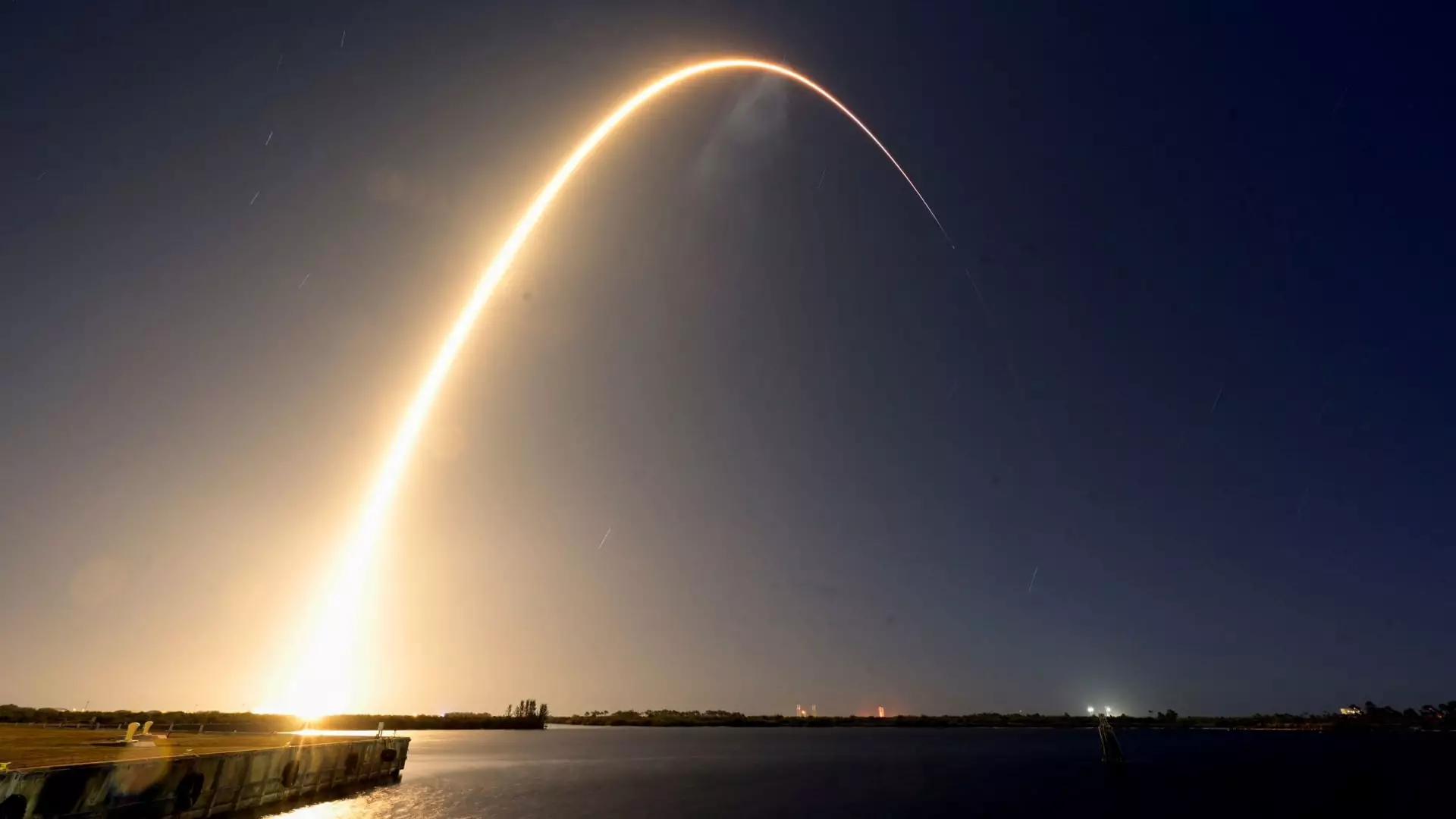Firefly Aerospace, based in Texas, has embarked on a significant venture that marks its entry into the competitive lunar services market. With the launch of its “Blue Ghost” cargo lander aboard SpaceX’s Falcon 9 rocket, the company aims to establish a foothold in a rapidly evolving industry centered around payload delivery to the Moon. This mission not only highlights American innovation in space exploration but also underscores a broader shift toward commercial participation in lunar endeavors.
On a fateful Wednesday morning, the Blue Ghost began its journey from Florida, setting off on a challenging 45-day voyage. Firefly CEO Jason Kim expressed an optimistic outlook, emphasizing their commitment to successful mission execution with precise operations in space and a safe lunar landing. This inaugural lunar mission distinguishes Firefly from its competitors, marking a significant milestone in its evolution from satellite launch services to intricate space systems, including landers and space tugs.
The Blue Ghost cargo lander stands at nearly seven feet tall and boasts a notable project under a $101 million NASA contract, which is designated to carry ten payloads from both governmental and commercial sectors. This mission, part of NASA’s Commercial Lunar Payload Services (CLPS) program, is designed to facilitate the delivery of various scientific experiments and cargo, thereby supporting NASA’s ambitious Artemis program that seeks to return humans to the Moon.
NASA’s CLPS program is pivotal in nurturing the burgeoning market for lunar exploration, with multiple private enterprises vying for a chance to participate in this venture. The mission conducted by Firefly follows in the footsteps of its contemporaries, Astrobotic and Intuitive Machines, who have previously launched their lunar missions. While Astrobotic’s efforts were unsuccessful, and Intuitive Machines faced a troubled descent, Firefly’s ambitions seem rooted in meticulous planning and a desire for robust operational frameworks.
Firefly has laid out an ambitious blueprint involving 17 milestones that encompass critical mission stages. To date, the company has reported successfully accomplishing five of these, including launch preparations and initial in-orbit testing, projecting confidence as it approaches the culminating challenge: a soft landing on the Moon’s surface.
Despite the optimism surrounding the Blue Ghost mission, the challenges of lunar landings are daunting. As history shows, even experienced entities can encounter unexpected hurdles. The recent challenges faced by Astrobotic and Intuitive Machines underline the unpredictability of lunar operations, making Firefly’s aspirations both challenging and noteworthy.
Moreover, it must be noted that on the same launch day, ispace—a Japanese firm—also sent a lander to join the mission, following its rocky history with a previous crash. This rideshare agreement reflects the increasingly collaborative nature of the space industry, where partnerships emerge not just in shared technological resources but also in risk mitigation strategies.
The upcoming months will be crucial not just for Firefly, but for the overall landscape of lunar exploration. NASA anticipates as many as five U.S. companies embarking on lunar missions throughout 2025, stimulating growth in this sector. Firefly’s commitment to achieve a full lunar day of operations—spanning approximately 14 Earth days—followed by extended functionality into the lunar night, is a testament to its ambitious vision.
The implications of successful lunar landings extend far beyond national pride; these missions are vital for laying the groundwork for future human colonization of the Moon and beyond, potentially unlocking resources that could sustain long-term space exploration. Firefly Aerospace’s journey symbolizes more than just entering a competitive marketplace; it represents humanity’s enduring quest to explore and understand our celestial neighbors.
As we turn our eyes skyward, the efforts of companies like Firefly Aerospace signal a new era of space exploration where private enterprise plays an integral role. Their endeavors stand to redefine our relationship with the Moon, offering a glimpse into the future of interplanetary travel and the societal benefits that stem from it. The Blue Ghost mission encapsulates the spirit of adventure and innovation, challenging us to dream of what lies ahead in the wondrous realm of space exploration.

Leave a Reply